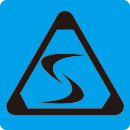Home >> Technical FAQs >> pcd advanced features better than cvd diamond and single crystal diamond |
| |
pcd advanced features better than cvd diamond and single crystal diamond |
It is well-known that polycrystalline diamond, or PCD, is able to deliver high performances in cutting applications. Furthermore, pcd cutting tools have the ability to lower a company's overall tooling costs. Under the right conditions and with the proper maintenance, great savings can be achieved. The first tool life can yield savings of up to 40% in comparison to other tools, like CVD (chemical vapor deposition) tools and single crystal diamonds, or SCD. |
Diamonds are widely used in various fields. The key areas of application are as follows:
- Synthetic diamond powders and diamond-based products are used in super-abrasives field of lapping, finishing, grinding.
- Diamonds in form of PDC are widely used in oil and gas drills as no other material is capable of handing the extreme conditions.
- Diamonds in form of PCD are applied for precision cutting of hard metals, especially for non-ferrous metal of aluminum alloy turning and milling. |
Single Crystal Diamond
Even though SCD, or Single Crystal Diamond, or created within weeks in a laboratory using an artificial process, this kind of cutting tool has its disadvantages. For example, it's not easy to manufacture it inexpensively and with the precisely desired structure. Single Crystal Diamonds are created by CHD or high pressure based on high temperature synthesis (HPHT). Both manufacturing processes use very tightly human-controlled growth conditions, and the final product, i.e. material produced is then subject to very stringent quality control procedures. The final product is an SCD that's highly consistent and has predictable properties and behavior. The other way to create SCDs is by CVD technology. Which leads us to the next topic. |
Chemical Vapor Deposition
Beside SCD, we have CVD or Chemical Vapor Deposition technology. This technology is based on coating a wide range of metal cutting tools, including hacksaws, drills, razor blades and inserts. In some cases, CVD increases the life of a cutting tool by 20 times the life of an uncoated tool. Even more, the cutting speeds and the quality of cutting are significantly improved by surface engineering. A flat and round diamond plate could be prepared by CVD techniques, which means that material is deposited from a gas onto a substrate and that chemical reactions are involved. However, there are certain problems with the long-term quality and effectiveness of CVD-based tools. For example, sometimes the particles on some tools wear off quite quickly, rendering the tools quite ineffective after only a short time in operation. Even more, sometimes these particles may present a health hazard should they come in the contact with the workers or patients, if the tool is used in medicine. |
Then, why is PCD diamond better than synthetic diamonds like SCD and CVD?
In the first place, Polycrystalline Diamond, or PCD, is usually cheaper to produce than SCD or Single Crystal Diamond, and there are well-established methods to grow PCD on large carrier substrates. Actually, this kind of diamond can be grown using two methods. It can be produced by either a CVD process or using a hot filament method. Through careful control of the growth process, PCD can be actually grown to exhibit some intrinsic properties and also be capable of being electrically conductive. Going beyond the thermal use of other types of diamonds, PCD can be widely used for MEMs, high temperature, high frequency and radiation hard device applications. Even more, PCD is more shock-resistant over other kinds of diamonds because of its random orientation structure of the diamond particles. PCD is readily available in a large variety of shapes and sizes. PCD is more constant in wear, as well. Again, because of the random orientation structure, it's strong and lasting. |

